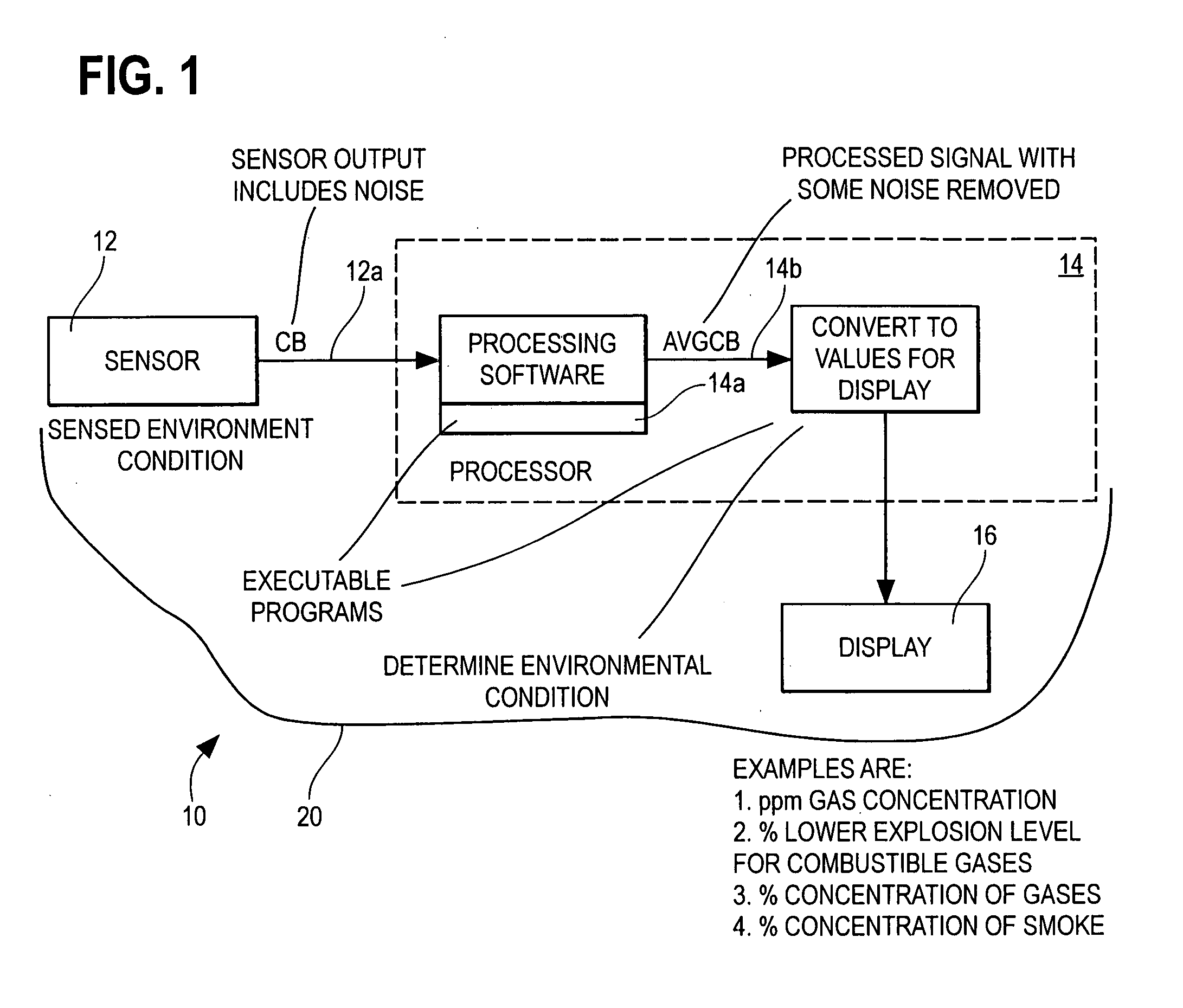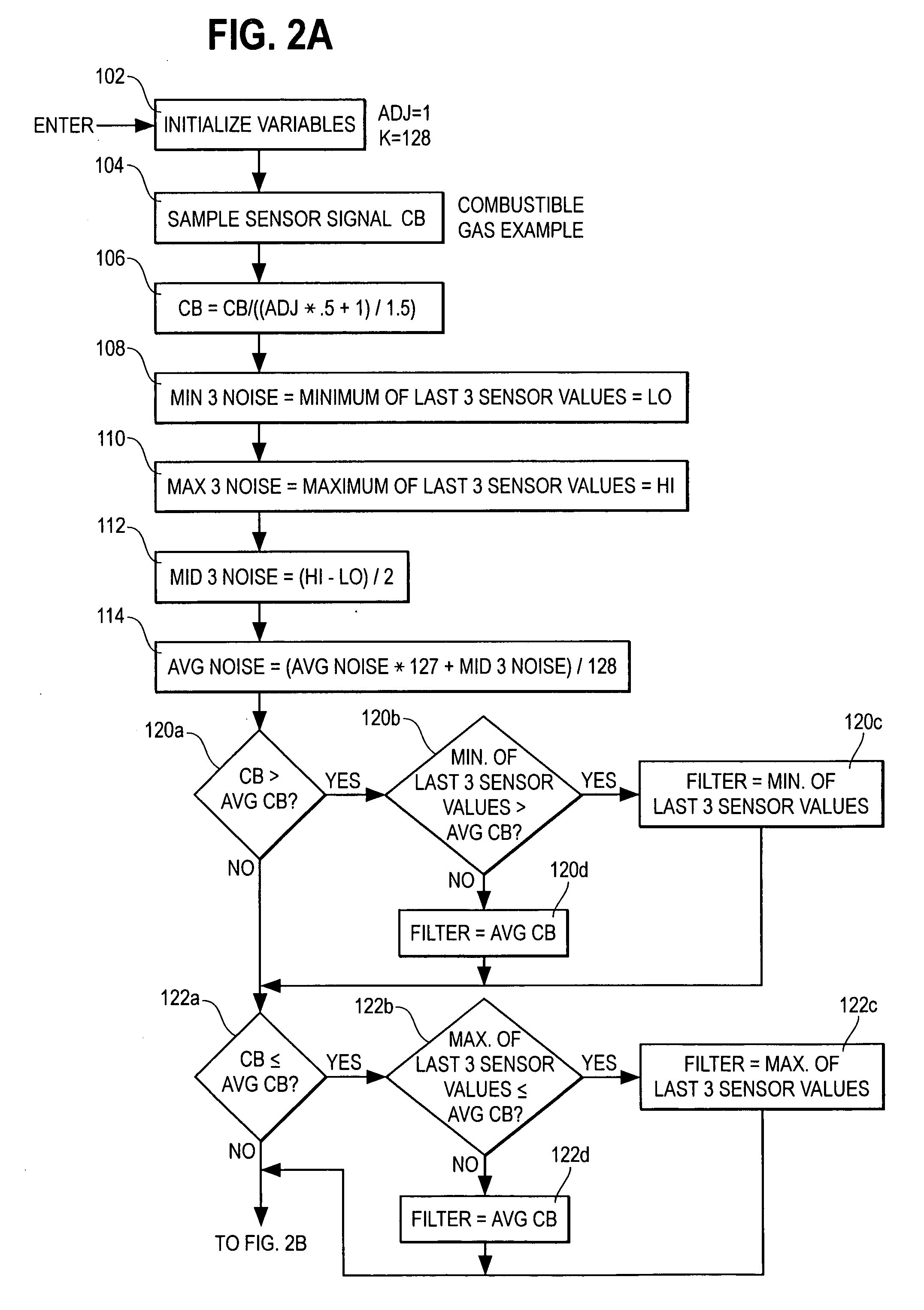Apparatus and method for dynamic smoothing
a dynamic smoothing and signal processing technology, applied in the field of noisy signal processing, can solve the problems of introducing a being very slow in responding to changes in the raw signal, and introducing a degree of delay in the processed signal
- Summary
- Abstract
- Description
- Claims
- Application Information
AI Technical Summary
Benefits of technology
Problems solved by technology
Method used
Image
Examples
Embodiment Construction
[0007] While embodiments of this invention can take many different forms, specific embodiments thereof are shown in the drawings and will be described herein in detail with the understanding that the present disclosure is to be considered as an exemplification of the principles of the invention and is not intended to limit the invention to the specific embodiment illustrated.
[0008] Detectors and methods in accordance with the present invention exhibit a fast response to signal changes, for example produced by changing ambient conditions along with an improved signal-to-noise ratio. Communications signals as well as signals from sensors can be processed accordingly.
[0009] The method incorporates variable averaging which is used to remove the noise. A variable averaging equation varies and dynamically changes the number of samples in response to incoming signals. For example, the number of samples used for forming an average, hence suppressing or removing noise, can vary from one to...
PUM
 Login to View More
Login to View More Abstract
Description
Claims
Application Information
 Login to View More
Login to View More - R&D
- Intellectual Property
- Life Sciences
- Materials
- Tech Scout
- Unparalleled Data Quality
- Higher Quality Content
- 60% Fewer Hallucinations
Browse by: Latest US Patents, China's latest patents, Technical Efficacy Thesaurus, Application Domain, Technology Topic, Popular Technical Reports.
© 2025 PatSnap. All rights reserved.Legal|Privacy policy|Modern Slavery Act Transparency Statement|Sitemap|About US| Contact US: help@patsnap.com



